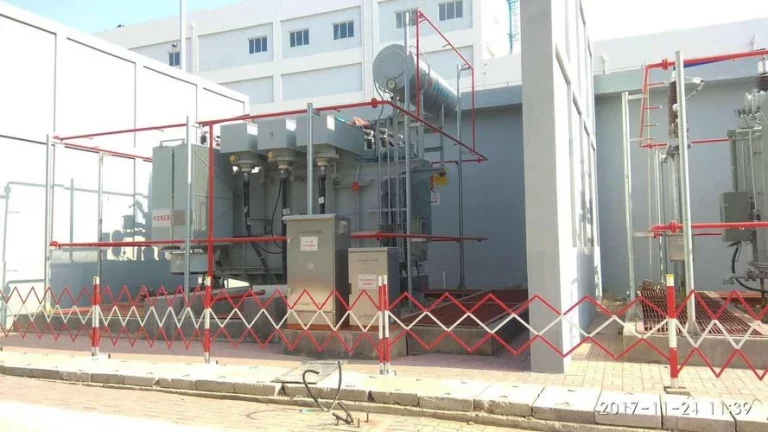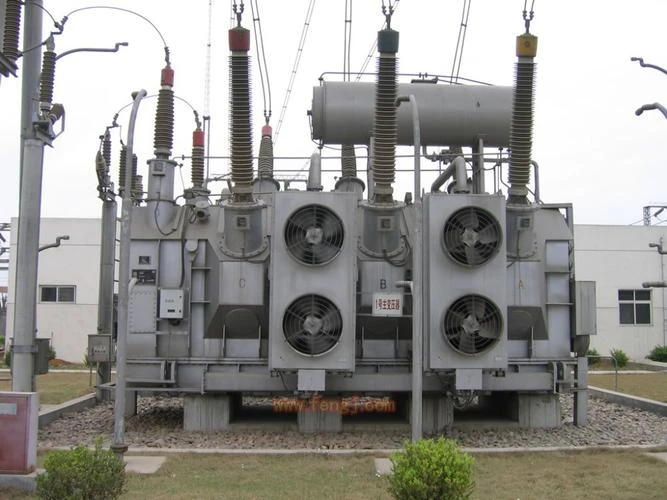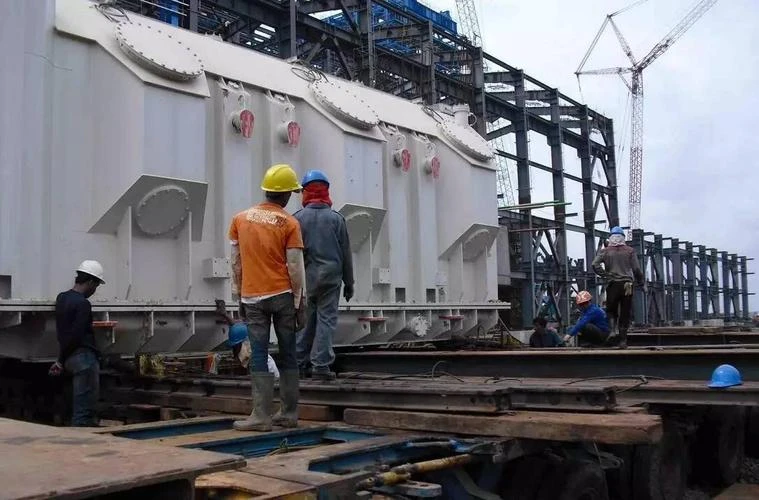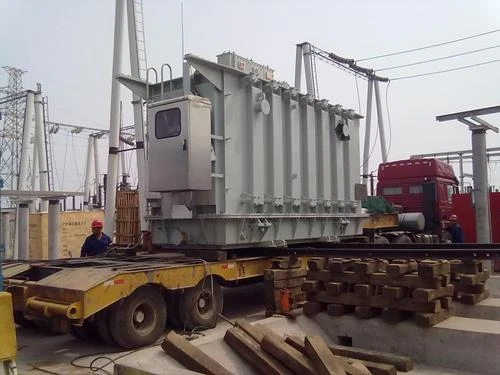
How to Choose Pad Mounted Transformer?
Table of Contents Selecting the right pad-mounted transformer requires careful consideration of several critical
ELECTRIC, WITH AN EDGE
This paper introduces the reasonable selection method of 1500 kva transformer application in water supply and drainage engineering, gives the requirements for the selection and operation mode of 1500 kva transformer, and analyzes the operating loss of 1500 kva transformer according to other electrical factors under actual operating conditions. After the analysis, the design scheme of 1500 kva transformer selection and comprehensive control of 1500 kva transformer loss is concluded.

In the electrical system of large-scale water supply and drainage projects, the power 1500 kva transformer is not only an important part of the system, but also one of the key links of energy loss. Therefore, an effective energy-saving and emission-reduction design method must be adopted for the 1500 kva transformer.
If the design is improper, the operation of the water supply and drainage project will not only cause serious energy waste, but also cause secondary problems such as high operating costs and economic losses.
How to carry out reasonable energy-saving and emission-reduction design for 1500 kva transformer is the focus of traditional technology research on electrical system of large-scale water supply and drainage projects.
At present, the 10 kV 1500 kva transformer is widely used in water supply and drainage electrical systems, and it will generate a lot of power loss during operation.
The energy efficiency of the 1500 kva transformer is divided into two parts: static energy efficiency and dynamic energy efficiency. The goal of improving the static energy efficiency and dynamic energy efficiency of the 1500 kva transformer is to reduce the no-load loss and load loss of the 1500 kva transformer.
The no-load loss is the body loss of the 1500 kva transformer, which is mainly reduced by the application of new technologies such as new processes and new materials in the manufacturing and production of the 1500 kva transformer. It only involves the reasonable selection of the 1500 kva transformer equipment.
The load loss is the load variable loss, which is the loss caused by the influence of the relevant actual dynamic parameters during the operation of the 1500 kva transformer. The dynamic loss can be effectively reduced by reasonably selecting the capacity and operation mode of the 1500 kva transformer.
In traditional water supply and drainage projects, two 1500 kva transformers are usually selected in the selection and design of two 1500 kva transformers, one for use and one for backup, which overemphasizes the reliability of the power supply and distribution system and ignores the loss of 1500 kva transformers and corporate economic benefits.
At present, the simultaneous operation of two 1500 kva transformers has become the mainstream, especially under the policy of exempting the basic electricity price for environmental protection enterprises such as sewage treatment plants. Transformer energy saving and maximization of enterprise economic benefits.
The capacity and quantity of 1500 kva transformers in the electrical system of water supply and drainage engineering should be determined according to the number of power supply circuits, load nature, power consumption capacity, operation mode and enterprise development of the electrical system. On the basis of ensuring the reliability of the power supply and distribution system, focus on the economic rationality of the 1500 kva transformer capacity design.
The electrical systems of large and medium-sized water supply and drainage projects are mainly loaded with secondary or higher loads, and are generally equipped with more than two 1500 kva transformers.

For substations equipped with two or more 1500 kva transformers, when any one of the 1500 kva transformers is disconnected, the capacity of the remaining 1500 kva transformers will guarantee 100% of the primary and secondary loads.
Usually there are two operating modes of two 1500 kva transformers in water supply and drainage projects: separate operation and parallel operation. Among them, the use of separate operation is more common, and it is divided into two working modes: one for use and one for backup and dual-use.
In the traditional design of water supply and drainage, too much attention is paid to the safety margin of the 1500 kva transformer, and the operation mode of one use and one backup is usually selected, resulting in a generally large installed capacity of the 1500 kva transformer.

In recent years, more and more attention has been paid to reducing the consumption and waste of electric energy. According to a reasonable technical and economic comparison, the water supply and drainage project adopts two 1500 kva transformers in a separate operation mode: under the condition of 50%~60% load rate ( When one 1500 kva transformer is disconnected, the capacity of the other 1500 kva transformer is guaranteed to be 100% for the primary and secondary loads), and the simultaneous operation of the two units has gradually become the mainstream.
The economical operation of 1500 kva transformer can be divided into three regions: the best operating region, the economical operating region, and the worst operating region.
For the design of 1500 kva transformer in water supply and drainage engineering, it should work in the economic operation area, preferably in the best operation area, and avoid working in the worst operation area.

The output active power of 1500 kva transformer is positively correlated with the load power factor, and high power factor can bring high output active power of 1500 kva transformer.
In addition, improving the power factor can also reduce the power loss of the transmission line, reduce the line voltage loss, improve the voltage quality, improve the efficiency of the power supply and distribution system, and reduce the input of cable conductor metal.
The 1500 kva transformer in the electrical system and the light load condition of the asynchronous motor will cause its natural power factor to be very low. In the water supply and drainage project, such electrical equipment should be avoided to be under light load conditions for a long time, and the rated conditions should be reached as far as possible to achieve the goal of improving the natural power factor.
The power factor is improved by reactive power compensation methods. Common reactive power compensation methods mainly include centralized compensation, decentralized compensation and local compensation.
In the design practice of the electrical system of water supply and drainage engineering, reactive power compensation advocates the design principle of “combining concentration and dispersion, on-site balance”, effectively reducing power loss of power supply and distribution lines and 1500 kva transformer, and improving the operation efficiency of power supply and distribution system. .
Centralized compensation is suitable for substations, suitable for power loads with large reactive power compensation capacity, relatively centralized and close to the power supply system. The compensation device is directly installed on the high-voltage system busbar or low-voltage system busbar; decentralized compensation is suitable for each Workshop low-voltage power distribution motor control center;
The local compensation is suitable for a single power load with large compensation capacity and stable reactive power compensation capacity. For example, the high-voltage 10 kV power frequency pump motor in the water supply and drainage project should adopt the single-machine local compensation method.
The ubiquitous harmonics in the electrical system of water supply and drainage engineering will also have a direct impact on the loss of the 1500 kva transformer. When the harmonic current passes through the 1500 kva transformer coil, the impedance will increase, and the loss of the 1500 kva transformer will also increase. Therefore, by suppressing the The harmonic method can effectively reduce the loss of the 1500 kva transformer.
There are two main ways to control harmonics in the electrical system of water supply and drainage projects: one is preventive measures, that is, starting from eliminating or reducing the harmonics generated by the electrical device itself;
The other is a remedial measure, that is, a filter device is used for the harmonics generated by the electrical installations, so that the harmonics do not enter the power supply and distribution system, or the total harmonic distortion current is limited within the allowable range of the power supply and distribution system at all levels.
The preventive measure is to use electric drive automation devices that do not generate or generate less harmonics as much as possible in the electrical system, which can be realized by multi-phase rectification and multiplexing technology; also can use specific electrical equipment, such as the Dyn11 connection group method. The 1500 kva transformer is used to block the passage of the third-order harmonic current on the high and low voltage sides of the 1500 kva transformer, thereby reducing the harmonic current on the high voltage side of the power system.
The most commonly used and effective is the use of harmonic filtering equipment. Generally, passive filters and active filters can be used.
Passive filter is a filter composed of passive components such as resistors, reactors and capacitors to suppress harmonic currents entering the public power grid. The advantages of this method are simple structure, low investment, simple maintenance and operation. Reliable, the disadvantage is that the filtering characteristics depend on the impedance of the power supply, the harmonics cannot be completely filtered out, and there is a danger of parallel resonance.
Active filtering is actually to create another harmonic current source with the same magnitude and opposite phase as the harmonic current, so as to completely filter out the harmonic current. The risk of impedance affecting resonance is low.
Different from the electrical system of civil buildings, there are a large number of nonlinear power electronic equipment. The harmonic sources in the electrical system of some small and medium-sized water supply and drainage projects are relatively single and concentrated, mainly the frequency converter speed control device in the low-voltage water pump and fan load. In the electrical design practice of similar projects, the design principle of “taking the local treatment of harmonic sources” is advocated. For each inverter, a matching passive filter is used in place to suppress the harmonic current, and the problem of harmonic current pollution is eliminated in situ. In addition to the characteristics of simple structure and low investment of passive filters, it can effectively reduce additional losses such as lines and 1500 kva transformers, and improve the operating efficiency of power supply and distribution systems.
Another part of the electrical systems of large and medium-sized water supply and drainage projects has complex and scattered harmonic sources, such as large-capacity DC rectifiers, large-scale UPSs, electronic ballasts, etc. In such electrical systems, centralized Source filter management scheme.
When the three-phase asymmetrical operation of the electrical system, the current of each phase is different, resulting in an increase in the loss of the 1500 kva transformer.
The electrical system of water supply and drainage engineering mainly consists of three-phase loads. Generally, there is no three-phase unbalance problem in non-fault conditions. The load balance has little effect on the loss of the 1500 kva transformer. For single-phase loads such as lighting, the system should be phase-separated as much as possible. Just balance.

The 1500 kva transformer is selected according to the influence of low loss and economical effect of 1500 kva transformer operation.
(1) The 1500 kva transformer should be selected according to reducing the operating loss.
From the point of view of the operating loss of the 1500 kva transformer, the operating load rate of the 1500 kva transformer should be low and the loss should be small.
Under normal circumstances, the average load rate should be 50% to 70%.
(2) The capacity of 1500 kva transformer should be selected according to economic accounting.
When the basic electricity price is charged according to the capacity of the 1500 kva transformer, the average load rate of the 1500 kva transformer should be higher according to the operation mode of the 1500 kva transformer, usually 70%~90%. The column operation mode should be selected lower, usually 50%~70%;
When the basic electricity price is cancelled according to the capacity of the 1500 kva transformer, the optimal efficiency point of the two dry 1500 kva transformers operating in separate lines can be selected in the optimal economic operation area, usually 50%~60%.
(3) The capacity selection of 1500 kva transformer should also consider factors such as the power load level and the short-term and long-term reservation of the project, and determine after comparing the power loss and operating costs.
Download Resource

Table of Contents Selecting the right pad-mounted transformer requires careful consideration of several critical

The primary function of the pad mounted transformer is to serve as a critical distribution

A pad mounted transformer operates through electromagnetic induction, serving as a crucial distribution component that
After filling in the contact information, you can download the PDF.